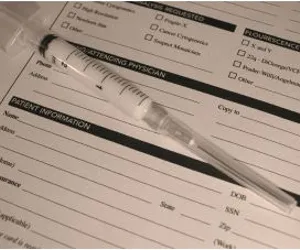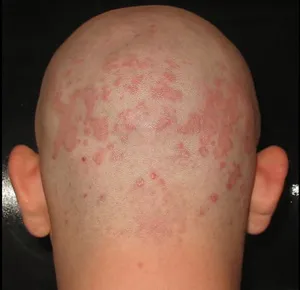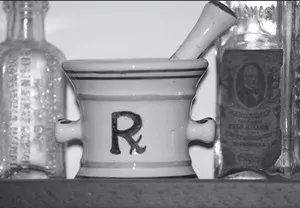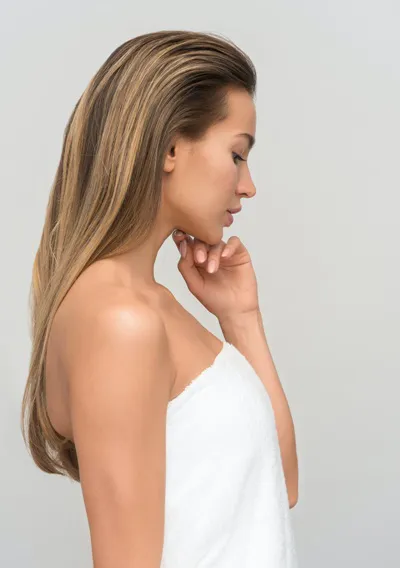
Scalp Micropigmentation (SMP) For Women's Hair Loss
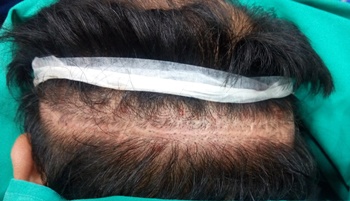 SMP - On backside of the head. Before Treatment.- Warisanwar - Wikipedia
SMP - On backside of the head. Before Treatment.- Warisanwar - WikipediaScalp micropigmentation (SMP) is popular with women who wish to camouflage their thinning hair. SMP is a novel remedy for women struggling with androgenic alopecia (AGA). It's also known as Female Pattern Hair Loss (FPHL).
The beauty of SMP is that it's a non-surgical solution. It's a superficial cosmetic tattoo created with tiny dots. It creates the illusion of volume or density to a thinning crown.
Whether a woman has long, medium, or short hair, scalp micropigmentation creates the look of thickness.
Since women with AGA tend to gradually thin throughout the part line, SMP is less obvious than in some men. The part line thinning is often followed by diffuse hair loss radiating from the top of the head.
SMP is an alternative to hair transplantation. This is noteworthy because a very small percentage of women are actually viable hair transplant clients.
SMP Can Be Applied To All Parts Of A Women's Scalp
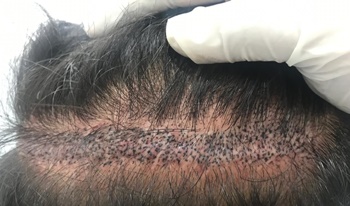 SMP after the procedure. Warisanwar - Wikipedia
SMP after the procedure. Warisanwar - WikipediaA woman's hairline rarely recedes, and women rarely become bald. If SMP is applied to a woman's hairline, it can be adjusted or touched up with relative ease.
The hairline is one of the most crucial aspects of the treatment. If this procedure is not done properly, it can create an unnatural finish.
If a woman wants to shave her hair, the tiny SMP dots create the illusion of a close buzz-cut hairstyle.
Scalp micropigmentation can be performed on all ethnicities. SMP can hide scalp burns or scarring.
Ink Is Deposited In The Upper Dermal Level Of The Skin
SMP, unlike traditional body or skin tattoos, penetrates the epidermal level of the skin. The ink is deposited in the upper dermal level of the skin.
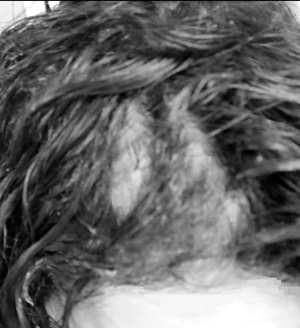 Female Hair Loss
Female Hair LossThis procedure does not require local anesthesia during the procedure.
The cost of scalp micropigmentation depends on various factors, such as location, the clinc proximity, and the hair loss severity.
The procedure takes three to four sessions which usually last about two hours each. The chosen ink color matches the current color of the hair follicle.
Although scalp micropigmentation is a permanent treatment, it can be removed with laser treatments.
Potential Side Effects Of SMP
The chosen ink color matches the current color of the hair follicle. SMP practitioners may perform a small patch test on a hidden part of the scalp.
This will rule out any potential allergies to the ink. Allergic reactions are considered to be rare.
Especially as long as the ink used is from a reputable professional.
Scalp Micropigmentation Risks
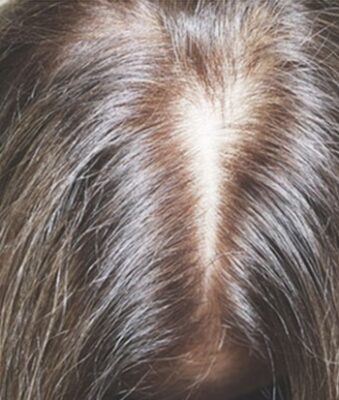 Female Hair Loss
Female Hair LossThere are some potential risks.
These include:
1. Sometimes, the SMP ink may change color.
2. The ink can take on blue or green tints.3. It may no longer resemble the dark black hue of healthy hair follicles.
4. If the SMP practitioner isn't an expert, the finished pattern may look unnatural.SMP is permanent. It can last for more than 10 years. It may start to look unnatural if a person's hair patterns change drastically.
Corrective procedures for SMP require laser removal. Llaser treatments are costly. They may carry a risk of scarring.
That's why it's important to be careful when selecting your SMP technician.
A regular tattoo artist most likely won't have the necessary hair geometry know-how.
SMP Is Different From Traditional Tattooing
SMP and tattooing are very different. The goal of SMP is to be completely invisible to others, whereas traditional tattooing is to draw lots of attention.
 Hairloss Along Hairline Edges - Hair Loss SBHB
Hairloss Along Hairline Edges - Hair Loss SBHBThis is why SMP practitioners are specialized cosmetic practioners. They use special ink and extremely thin needles. They lay artificial pigmentation in a way
that mimics the separate and individual hair follicles of a healthy, natural scalp.That's why SMP will never be possible with traditional tattooing equipment. Tattoo ink stands out too much to look like realistic stubble.
The needles used are not thin enough to recreate the miniaturized look of freshly-shaven hair.
Who Should Not Use Scalp Micropigmentation (SMP)?
Scalp Micropigmentation is not suitable for any form of scarring alopecia caused by an inflammatory autoimmune response.
Performing SMP on a person with scarring alopecia might aggravate the scalp. It could cause additional scarring and hair loss.
 Wet Wash Hair - HB Media - All Rights Reserved
Wet Wash Hair - HB Media - All Rights ReservedYour hair restoration physician will be able to advise you if SMP restoration is viable, given your particular type of alopecia.
SMP may or may not be an option for someone with various forms of alopecia areata.
Aftercare For SMP
One of the biggest challenges some women have with SMP is aftercare. They can't get their scalp or hair wet for a few days.
This includes shampooing.
Summary - Scalp Micropigmentation (SMP) For Women's Hair Loss
It’s touted as an immediate solution for women suffering from androgenic hair loss. There’s no invasive surgery and no scarring. There's also no downtime.
The results of SMP are gradual. Over time the ink builds up in layers. This creates a subtle effect.
It may not be viable for some types of scarring alopecia. It's critical if you're going to consider SMP that you find the very best expert possible.
Reference
What's Old Is New Again In Women's Hair LossSocial Media Network Information
Please follow us on Twitter at: https://Twitter.com/HairBoutique. I look forward to meeting new people from all walks of Twitter and learning from their Tweets.


